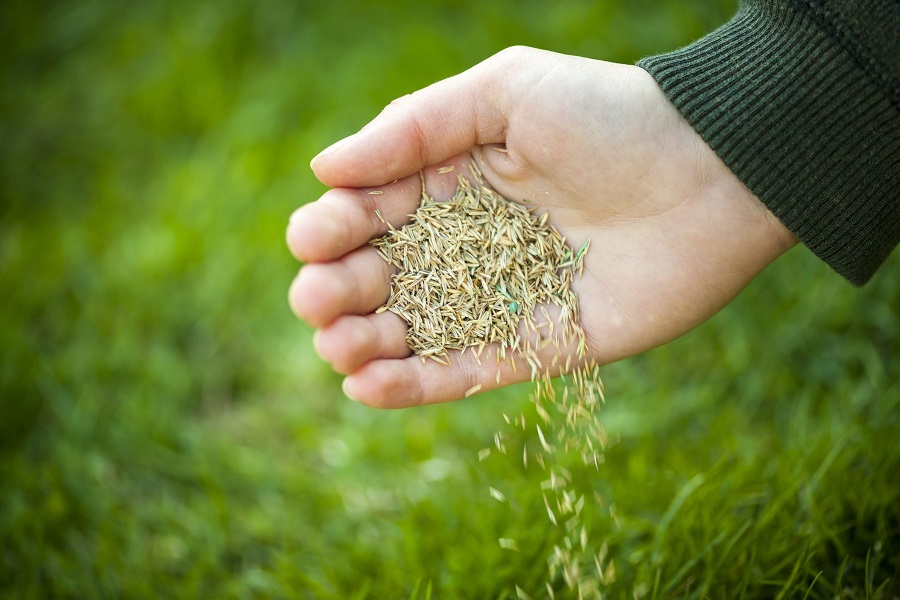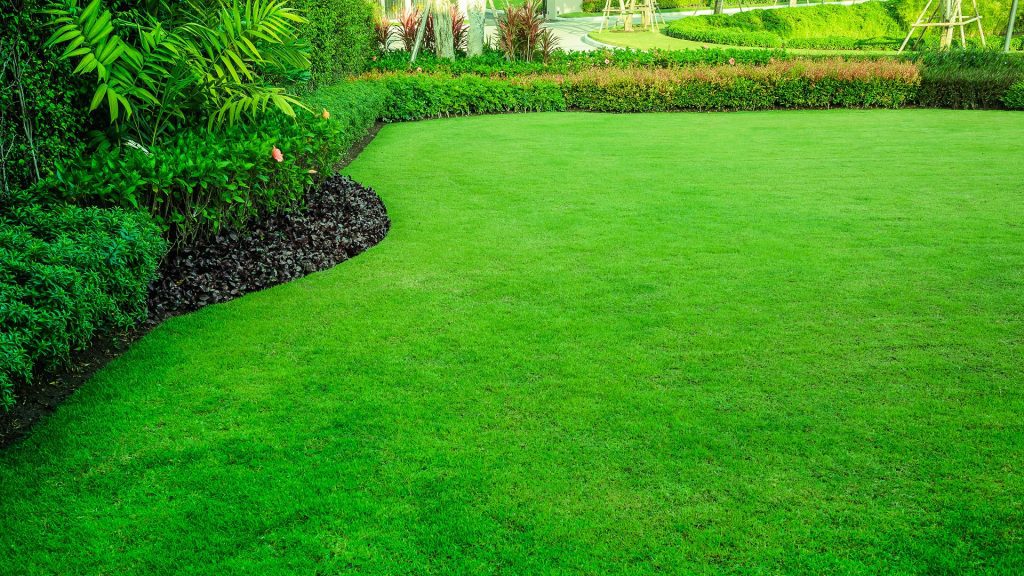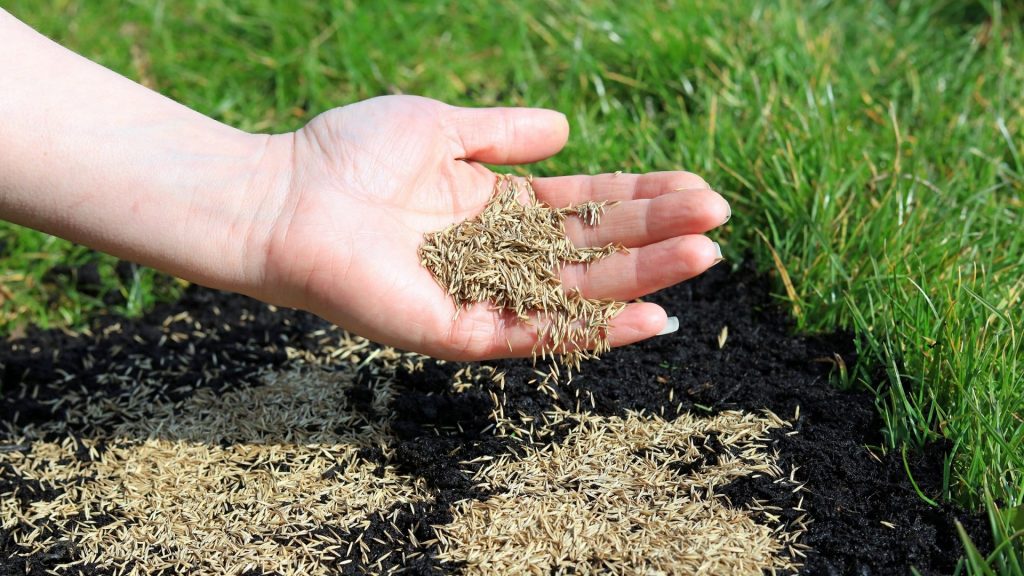
How To Reseed A Patchy Lawn
If you have patchy areas in your lawn, you shouldn’t just make peace with them or leave them alone. Over time, these patches are hotspots where weeds and moss can grow, killing off your grass.
How can you treat patchy areas of your lawn? You should reseed these areas of your grass, which is when you put down grass seeds to fill out bare spots and help your grass to grow healthier as well as look more uniform. If you’re dealing with an unsightly patchy lawn, you might wonder how to go about making it look better.
Read on to find out how to reseed a patchy lawn with success – you can do this even if you don’t have lots of DIY lawn experience.
Why Are There Patchy Areas In Your Lawn?
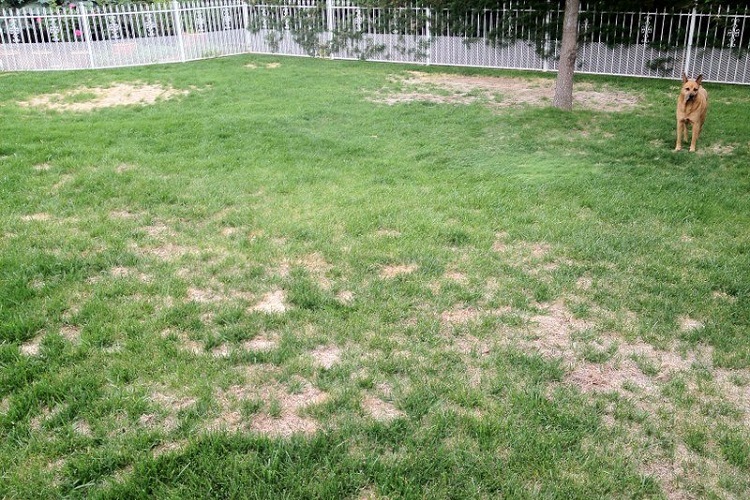
Have you noticed that some parts of your lawn look healthy and green, while other small patches are yellow or brown? Why does this happen?
These annoying patches in your lawn can occur for a variety of reasons, such as fungus, animal digging or urinating, and shady areas of your lawn that prevent all your lawn from getting enough sunlight.
You might also find that areas of your lawn where you walk a lot or push gardening equipment tend to experience unhealthy grass as compared to areas that are left alone where the grass can grow and thicken.
How To Reseed A Patchy Lawn
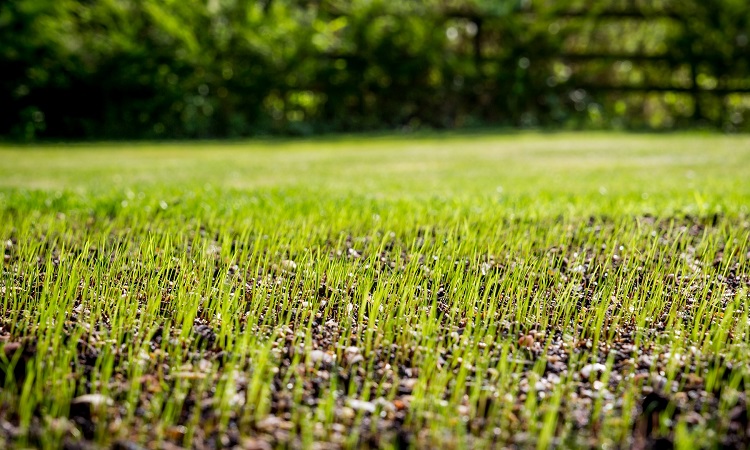
If you’re dealing with dead patches of grass in your lawn, you can deal with it successfully.
Before you add more grass seed to the area that requires it, make sure you prepare the ground. Here’s how to do it.
- Rake the area where you want to reseed the lawn. This will enable you to remove dead grass and any debris so that the seeds will be able to make contact with the soil. You can do this with a regular garden rake.
- Check the soil for compaction. If your soil is too compacted, this could actually be the reason why the grass isn’t growing in certain places. It prevents oxygen, nutrients, and water from being able to reach the roots of the grass. To test if your soil is compacted in bare spots of your lawn, take a screwdriver and push it into the soil. It should move easily instead of requiring you to use force. If you can’t get it into the soil then that’s a sign your soil is compacted. You should aerate it before you reseed any bare spots in the lawn. You can do this by renting a core aerator, which loosens the soil so that grass seed can better germinate and take root.
- With a shovel or spade, cut the area around the dead grass. Lift up the dead grass with the flat part of your tool.
- Apply some topsoil to the area where you’ve removed grass and thatch. This will ensure that it’s even and matches the rest of your lawn.
- You can also add a few inches of compost to the soil. Make sure you mix it into the soil with a garden rake. Use the top edge of your rake to smooth out the surface.
- Rake the soil, then apply a thin layer of grass seeds.
- Then, rake the soil again so that the grass can penetrate the soil and make contact with it. This will encourage the seeds to germinate.
- Water your seeds daily but do this lightly so that you don’t hydrate them too much.
- You can spread a layer of wheat straw over the area you’ve seeded. This helps to keep the seeds in place and it also keeps them properly hydrated so they can germinate.
Should you fertilize your soil after reseeding a patchy lawn?
Although it used to be recommended that you fertilize your lawn immediately after filling out its bare spots, this is no longer considered to be a golden rule. In fact, it’s best to put the fertilizer on ice until the grass has become well established, as this is much more useful to the grass.
When can you mow your grass?
Once the grass seeds have germinated and the grass has started to grow, you shouldn’t mow it too soon. You should let the grass grow so that it’s a bit taller than the rest of your grass. It needs to blend in with the rest of your lawn before you cut it.
Can You Fill Bare Spots In Your Lawn With Sod?

Filling bare patches in your lawn with sod can be convenient and quick, but make sure you follow some important tips to ensure its success.
- Use a shovel or spade to dig out the dying grass and cut a bit beyond the area. Make sure you cut a few inches deep into the soil.
- Prepare the ground with compost. Loosen the soil with a rake, and then add the compost to it. Even it out so that the sod will be level with the current grass.
- Cut a piece of sod that’s large enough to fit into the bare patch you want to cover. Make sure the seams between the pieces of sod are tight but don’t overlap them. Push the pieces of sod firmly against the soil.
- With a hose, water the sod that you’ve installed. You should also water it every day for two weeks to ensure that it’s properly hydrated. This is key for it to grow properly.
Note that the sod will start to blend in with the rest of your grass within about two weeks. It can require up to six weeks for the sod to become fully rooted, so you should bear that in mind.
If you notice that the patches of sod vary in color from the rest of your grass, this is a temporary problem that will remedy itself so don’t worry about it.
Extra Tips For Reseeding A Patchy Lawn

To ensure you get beautiful green grass all over your lawn, there are some important tips to bear in mind. We’ve covered when you should reseed your lawn in another article.
- Choose the right grass seed. The seeds you plant on your lawn need to be appropriate for your climate, soil, and shade conditions, so choose wisely. If you’re not sure what to choose, you should consult your local nursery. Note that some grass seeds, such as St. Augustine, can’t be grown from seeds as they have to be planted from grass plugs or sod.
- You might need a spreader. If you have a small lawn, you can simply spread the seeds over your lawn with your hands. If your lawn is large, you should use a drop spreader or broadcast spreader to make it easier.
- Sprinkle half of the seeds in one direction and the rest in the other so that you cover all the areas of your lawn.
- You should avoid walking in the area where you’ve planted grass seeds for 14 days. This will ensure that they are not disturbed during the germination process.
- If you notice weeds starting to sprout and grow in the area of your garden you’ve reseeded, pull them out right away. This will prevent them from getting in the way of the healthy growth of your new grass.
Related Questions
So at the end of the day how much does it cost to reseed your lawn?
We’ve written an article all about how much it costs to reseed your lawn.
Can you apply pre-emergent herbicides to soil before you reseed?
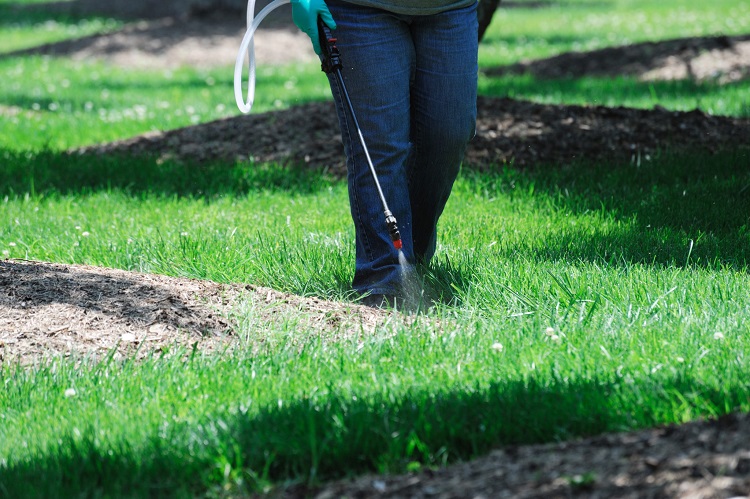
You should avoid doing this as these products can prevent the grass seeds from germinating and taking root. You should only use them at least five or six weeks before you seed your lawn.
Should you test your soil before reseeding?
If you’re dealing with patchy spots in your lawn, you can benefit from testing your soil’s pH. This will ensure that you’re not dealing with soil that’s too high in acid or alkaline which can prevent healthy grass from growing.
Conclusion
If you’re dealing with unsightly bare patches in your lawn, they can stress you out and make the rest of your lawn look less than appealing. Reseeding these bare spots is the best way to make your lawn look more uniform and even.
In this article, we’ve featured the tips you should follow to reseed a patchy lawn, and we’ve also looked at how you can plant sod in your lawn instead if you don’t want to grow grass from seeds.
Resources:
